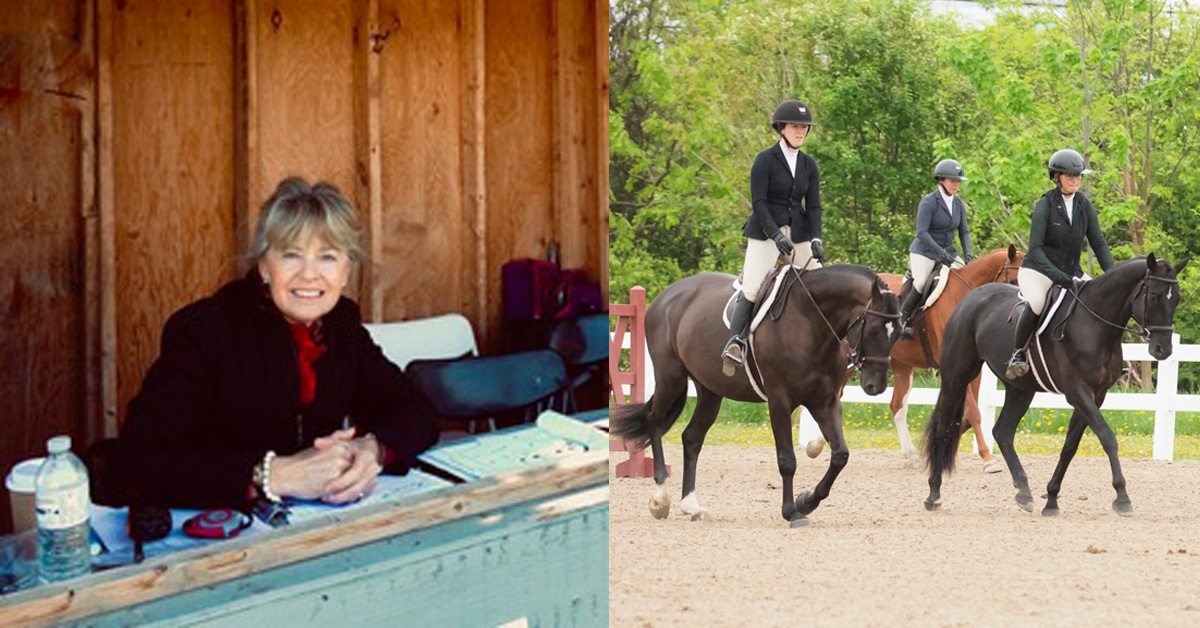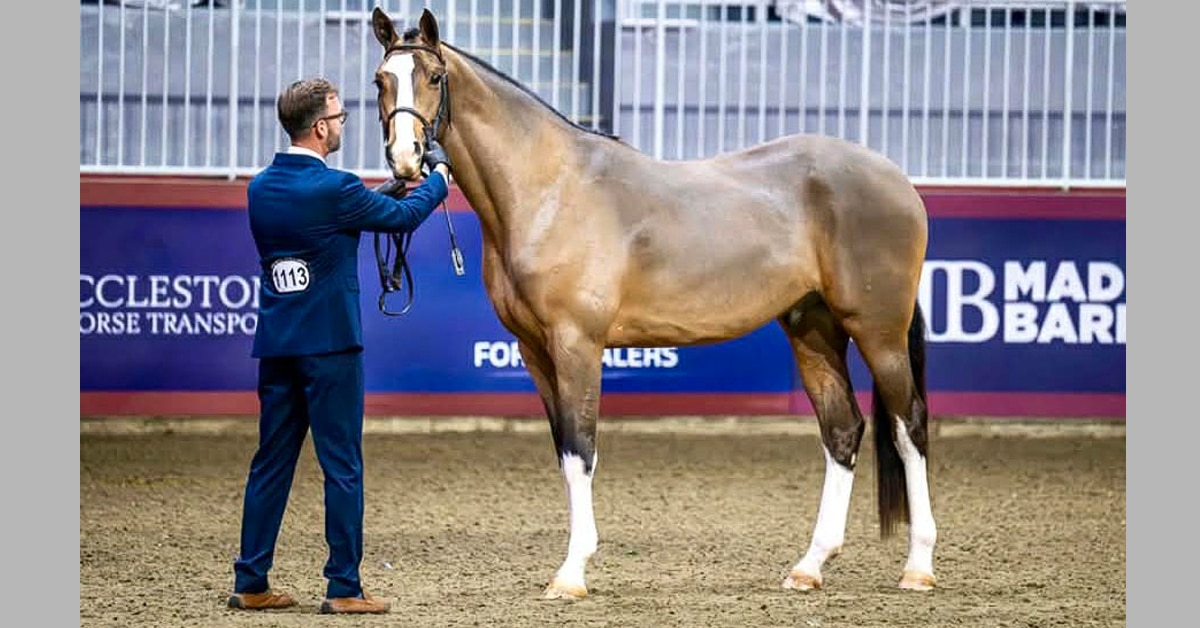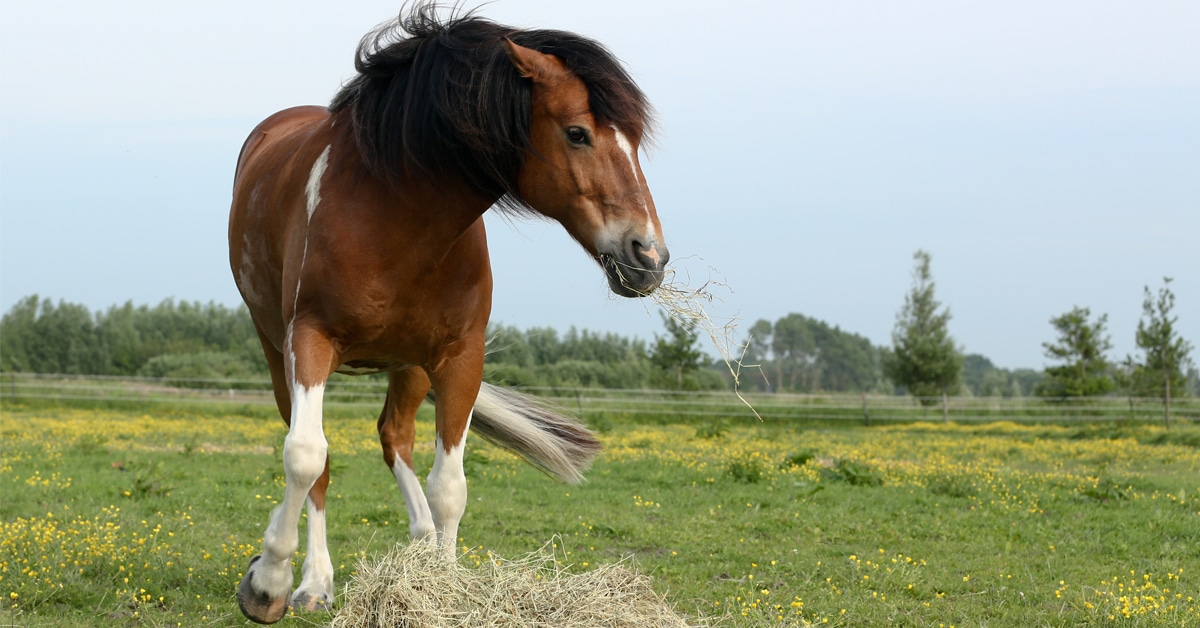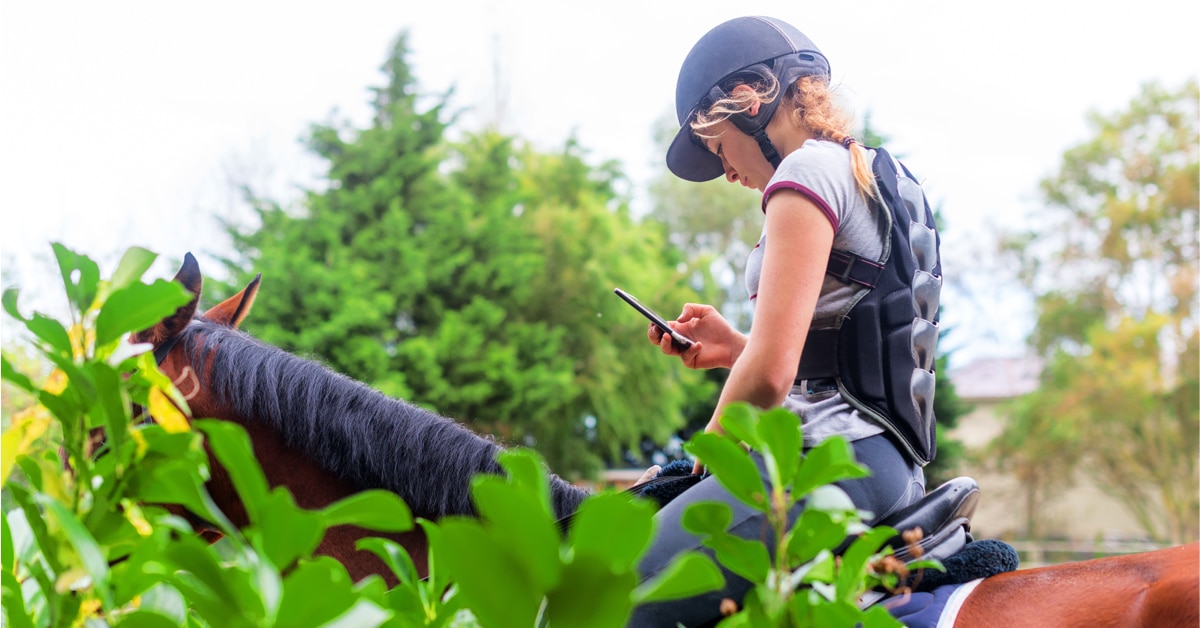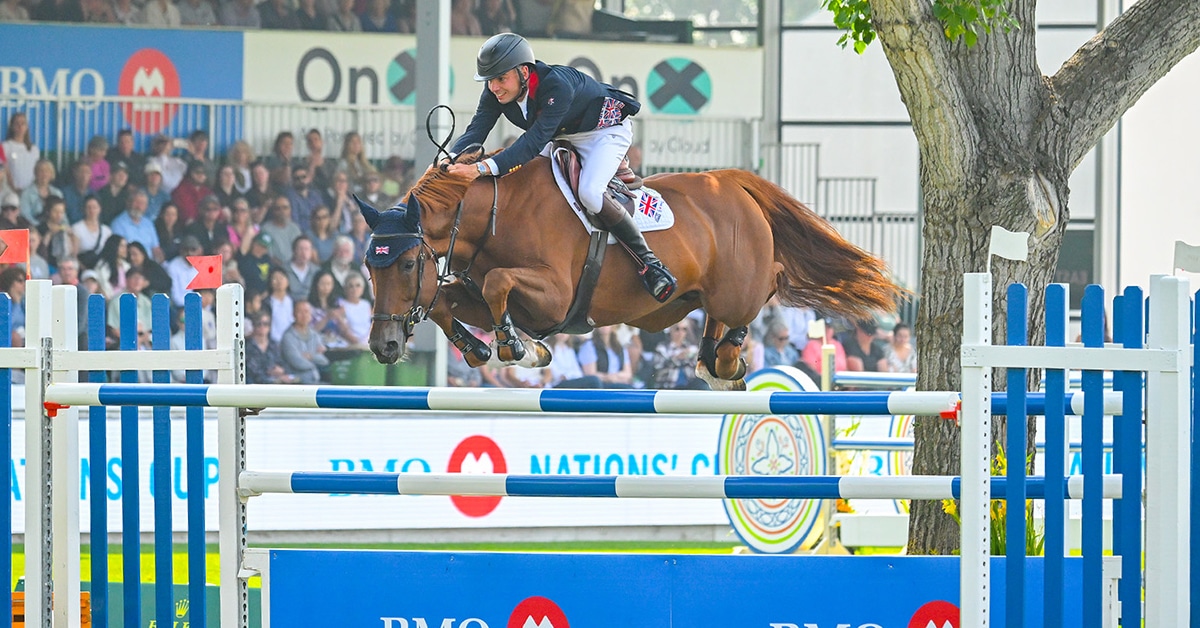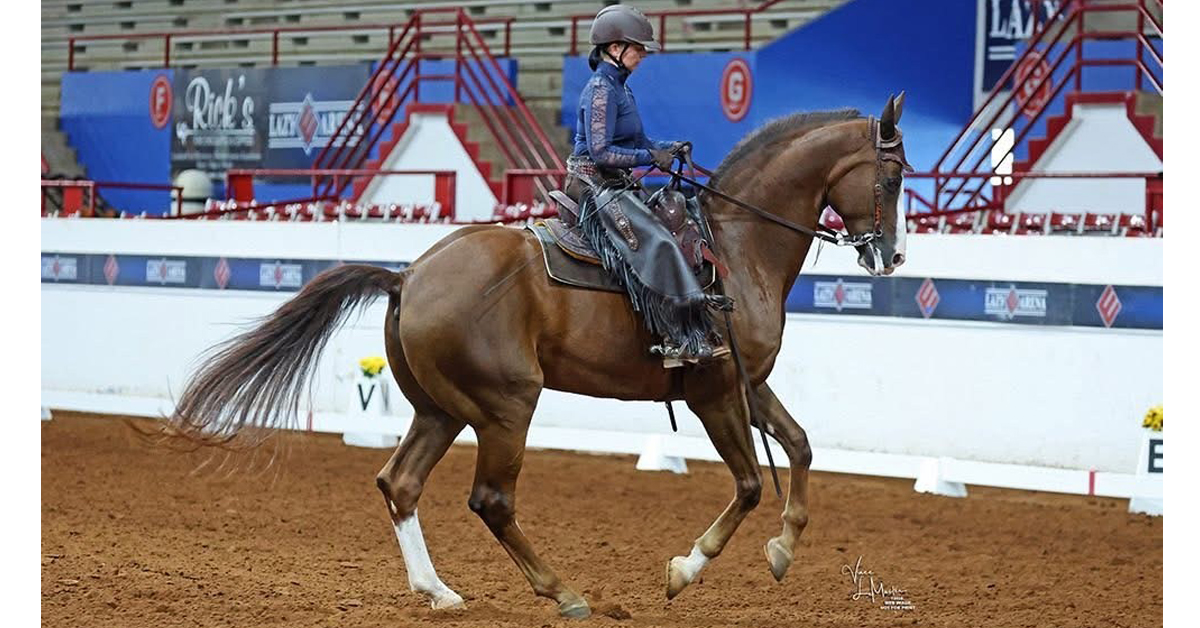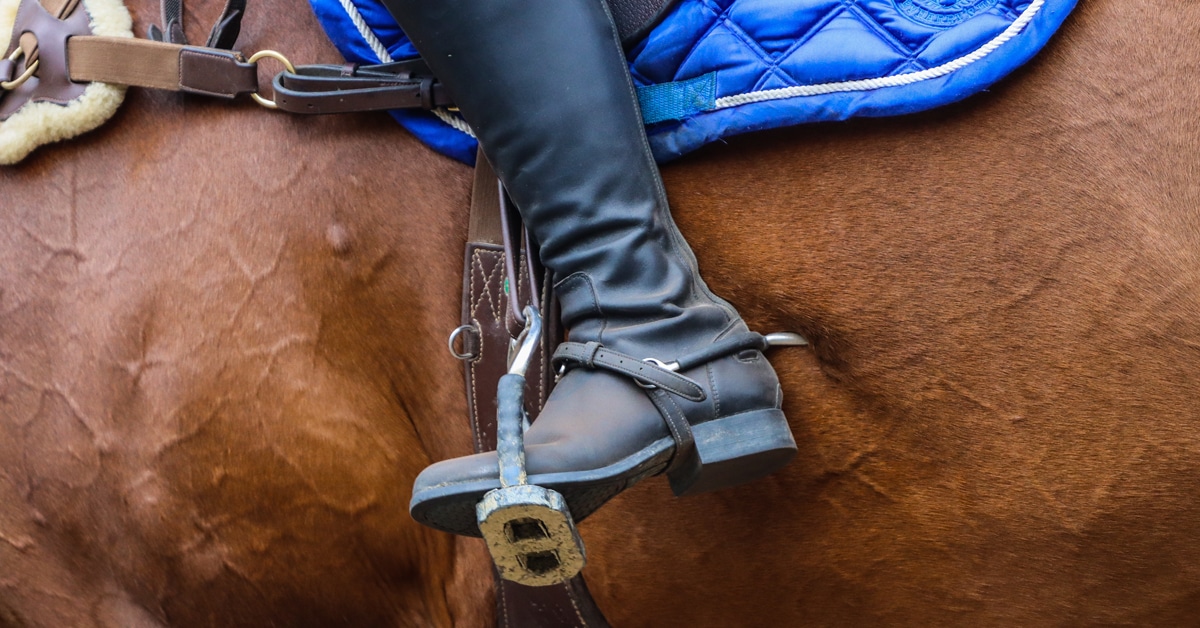There are so many aspects to consider when purchasing a horse, and while talent, temperament and conformation are top of the list, prospective buyers may overlook the very foundation of the horse – the feet.
Ross Smith has been shoeing sport and pleasure horses around Moosejaw, Saskatchewan, for over 40 years since graduating from the Oklahoma State Horseshoeing School. His practice, Centre of Balance Horseshoeing, holds mentorships and clinics throughout the province. He’s also the developer of the COBIT, an assessment tool used for determining the centre of balance of the foot in both sound and chronically lame horses.
Here Ross provides some tips about what to look for when buying your next horse.
Assessing the Foot – Standing
Rather than focusing only on the conformation and angles of the foot, Smith says it’s more important to begin by assessing how a horse is naturally holding his weight while standing. A horse’s natural stance can indicate pain and unbalance and speak to larger problems.

Ross Smith at work.
“First, make sure the horse is standing squarely on all four legs,” Smith says. “Ideally, you want the foot to be underneath the leg; you don’t want it to run forward or backward. If they’re excessively forward or backward, that tells you he may have some soreness because he’s not balanced correctly.”
Imbalance can sometimes also be an indication of lameness, or the potential for future lameness. For example, “Standing with one foot pointed forward can indicate soreness in that limb,” says Smith. “It’s the same thing if they shuffle from one foot to another, going back and forth.”
It’s important to realize that crookedness and imbalance might not originate in the structure of the foot itself, Smith notes. “Pay close attention to how the leg emerges from the shoulder. The leg is oftentimes not crooked, but the shoulder is crooked.”
“Very seldom will you find a horse with two feet exactly the same, but when the difference is very noticeable, it indicates a long-term problem.”
While straightness indicates the overall functionality of the body, less-than-perfect straightness does not necessarily mean poor functionality. Furthermore, perfectly straight legs and feet, says Smith, aren’t often found in nature – and that’s why any horse can develop lameness issues over time.
“We look for the perfect horse that has nothing wrong, but you’re not going to find many of them. Even top-level performance horses often have crooked legs … and all horses have little differences from right to left. Very seldom will you find a horse with two feet exactly the same, but when the difference is very noticeable, it indicates a long-term problem, typically for at least a span of years. A general rule of thumb is to trust your instincts; if the horse doesn’t look comfortable, he probably isn’t.”
Any irregularities and asymmetries should be taken into consideration when determining whether the horse is a good fit for you. “When you find a horse that has what you’re looking for in terms of disposition and performance, but has a crooked leg, or less-than-perfect feet, you have to decide if everything else outweighs the crooked leg, or if it’s so bad that it’s not worth the risk.”
To make that determination, Smith encourages enlisting professional help. “Here’s where you want to get your farrier to look at the horse with you, the same as you would your veterinarian. Vet checks are a very good thing to do when purchasing a horse, but keep in mind that it’s sometimes difficult for older horses to pass vet checks. They will have problems, but you will be made aware of them.”

Besides any obvious signs of lameness when trotting on a hard surface, also check for excessive or uneven wear on the hooves or shoes. (Nigel Baker – stock.adobe.com)
Assessing the Foot – Moving
Lameness is not always obvious, even when moving. “A bobbing head means obvious lameness, but sometimes there won’t be such an obvious sign, especially with conditions like navicular, there will only be a shortness of stride,” Smith says.
That’s why it’s important to assess the overall quality of movement. “Most importantly of all, you want a heel-first landing (see slow-mo video here). Any time a horse lands toe-first, he might be lame, even if it’s not visible. If a horse is landing toe-first, he’s telling you something is wrong.”
Horses should also “land flat” on the hoof when stepping, although it’s important to take each horse’s specific conformation into consideration. “If you have a horse that’s slightly toed-out, he physically cannot land flat on his foot,” Smith says. “He’ll land on the outside, but once he goes into the weight-bearing phase, he’ll be lined up straight and things will be fine. I don’t typically look to see if a horse is landing flat because that only works on a horse with perfectly straight legs, and world-class horses don’t always have flat-landing steps. Moving to the left or right can also be a form of avoidance, which can also indicate lameness, or the potential for chronic lameness that has not yet manifested.”
A Horse’s History is Written in His Hooves
“If the horse has brittle, chipped, or ‘shelly’ feet, they usually also have a bad coat,” says Smith. “The coat and hooves are directly linked. If you have a horse with shelly feet and a dull coat, he likely has nutritional problems and could have other health problems as well.”
Past stress is often visible in the foot. “Horizontal grooves in the feet are called ‘stress rings.’ If they are present in all four feet, it indicates that the horse may have been through trauma, like colic, illness, a change of feed, or that the horse has been moved from one place to another and had a drastic change in nutrition. If the stress rings are just in one foot, there might have been an injury to that foot, like a lameness, abscess, or other injury.”
“One foot noticeably smaller than the other … can sometimes indicate that there’s something wrong with the body, not the foot or leg.”
If the rings are not parallel to the coronet band, but are wavy or curled downward at the heel, this could indicate founder. “I can go to an auction barn and tell what horses have foundered without picking up the foot by the rings in their feet. Founder is manageable, depending on the degree of founder. I’ve shod some high-level performance horses that have foundered once or several times in their careers. The problem with founder is if it happens once, the second time it happens will be worse. If you change the feed, you may never have a problem again.”
Another thing to look for is whether are not the hooves are worn down, especially unevenly. “Excessive wear on the hooves, or if a horse’s foot is not square or worn off to one side, can indicate a problem with the way the horse travels. Check the shoes as well. If they’re worn in one place or another, this could be an indication of problems.”
Different-sized feet can also be an indication of trauma. “One foot noticeably smaller than the other, or one foot that’s upright and another at lower angles, can mean that there’s a soreness within the leg of the upright foot. The one that’s lower is the sound leg and it’s doing all the work. But it can sometimes indicate that there’s something wrong with the body, not the foot or leg.”
Lastly, a horse’s treatment, training, and temperament can also be indicated by how he acts when you ask him to pick up his foot. “Always pick up the horse’s feet and judge how he responds. Your farrier appreciates it when you get a horse that’s easy to work with!”
Making Your Choice
“You’re never going to find a perfect horse, so start by deciding if you really like the horse. Sometimes you have to learn to live with some things to get the horse you really want. Be aware that it might take some work, but you can sometimes live with it.”
Working with your farrier is key. “If you do decide to buy a horse who has a problem or potential problem, make your farrier aware. You can develop a plan. There aren’t usually overnight fixes to problems. If you want to get results, you need a whole team: farrier, vet, body workers, nutritionists. We all have to work together for the horse’s best interests. If everybody works as a team, you can take horses that are less than perfect and give them long, productive lives. I’ve had amazing results over the years. We’ve taken horses that were going to be put down and made them into national title holders.”
As a last piece of advice, Smith encourages “listening” to how a horse stands and moves. “If you look at the horse standing right in front of you, stand back and just look at your horse, you’ll see a lot. A lot of times we miss what’s standing right in front of our faces. How they move is talking to you. If you pay attention, you can make their lives better, and in return it’s amazing what horses can give back to us.”
The Latest
